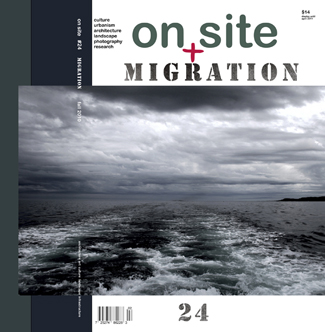
Thanks for everyone’s interest in my research on Morocco this summer. I have gotten a lot of questions about it being published. It’s not likely, but, I did a small side project that was published in the Canadian journal On Site Review in its 24th issue on migration. 
The issue is on newsstands now at Chapters and in most major bookstores. It can also be ordered online at: http://www.onsitereview.ca/
Here is a condensed version:
Jemaa el Fna is the main square in the medina of Marrakech and the major attraction for the two million tourists that visit the city on an annual basis. Touted as one of the busiest markets in Africa, if not the world, this remarkable public space has a bustling atmosphere that is chaotic, overwhelming and incredibly stimulating. Restauranteurs, fortunetellers and snake charmers work, among other vendors, to delight the senses of the tourists they captivate and the locals they serve on a daily basis.
Amidst the bedlam of the Jemaa el Fna night markets there is an unexpected example of human migration in its most intelligent and systematized form. Every night, vendors set up outdoor restaurants in the square. This routine, central to the Jemma el Fna experience, has evolved into a rigorous and incredibly efficient migration pattern, and at its core is a cart. This tool for the migrant restauranteurs was designed to improve celerity and efficiency within the nightly set up. However, it has also become a symbol for the spirit of migration that is so often found in nature.
At a cost of 30,000 Moroccan dirhams ($4,285 CAD), each vendor receives a kit consisting of a cart, posts, beams, joists and a tarp, which assemble into their mobile restaurant. The cart itself is approximately four feet wide, six feet long and three feet tall. It can be rolled like a wheelbarrow and has support braces to keep it stationary when in use. Four posts stem from its corners that fit into the roof scheme, which extends from the cart to provide shelter for a dining area.
These carts and their organization are a brilliant architectural manifestation of the needs of the vendors throughout their nightly routine. They illustrate that migration, in this instance, is the means to an end. It is a movement with the purpose of capitalizing upon an influx of resources, and thus efficiency throughout is vital. City bylaws in Marrakech only allow the temporary restaurants to be erected between 5pm and midnight during the winter and from 6 pm until 3 am during the summer; a shorter, more efficient transportation and set-up of equipment allows the hours of operation to be lengthened, maximizing revenues for each vendor.
In addition to the pragmatic gains of efficiency, the carts serve as a catalyst for a cooperative spirit that prioritizes the collective prosperity of the restaurant owners. Rather than differentiating their restaurants in the competitive, one-upmanship style of western business, each vendor contributes to the singular experience of the Marrakech night market; a display that could not be created individually.
The similarities in appearance and menus, the animated food preparation, and the hospitable and often outrageous servers cultivate a spectacle that depends on consistency to reinforce its authenticity. Although it is a relatively new phenomenon, the night market is a staple on any tourists ‘to do’ list and has become a truly Moroccan experience. While its superficial chaos intrigues us, the ordered and systematized processes of the night market in Jemaa el Fna ensure that it will sustain itself as an ongoing tradition in Marrakech and a regular human migration.



No Comments
Block this user
Are you sure you want to block this user and hide all related comments throughout the site?
Archinect
This is your first comment on Archinect. Your comment will be visible once approved.